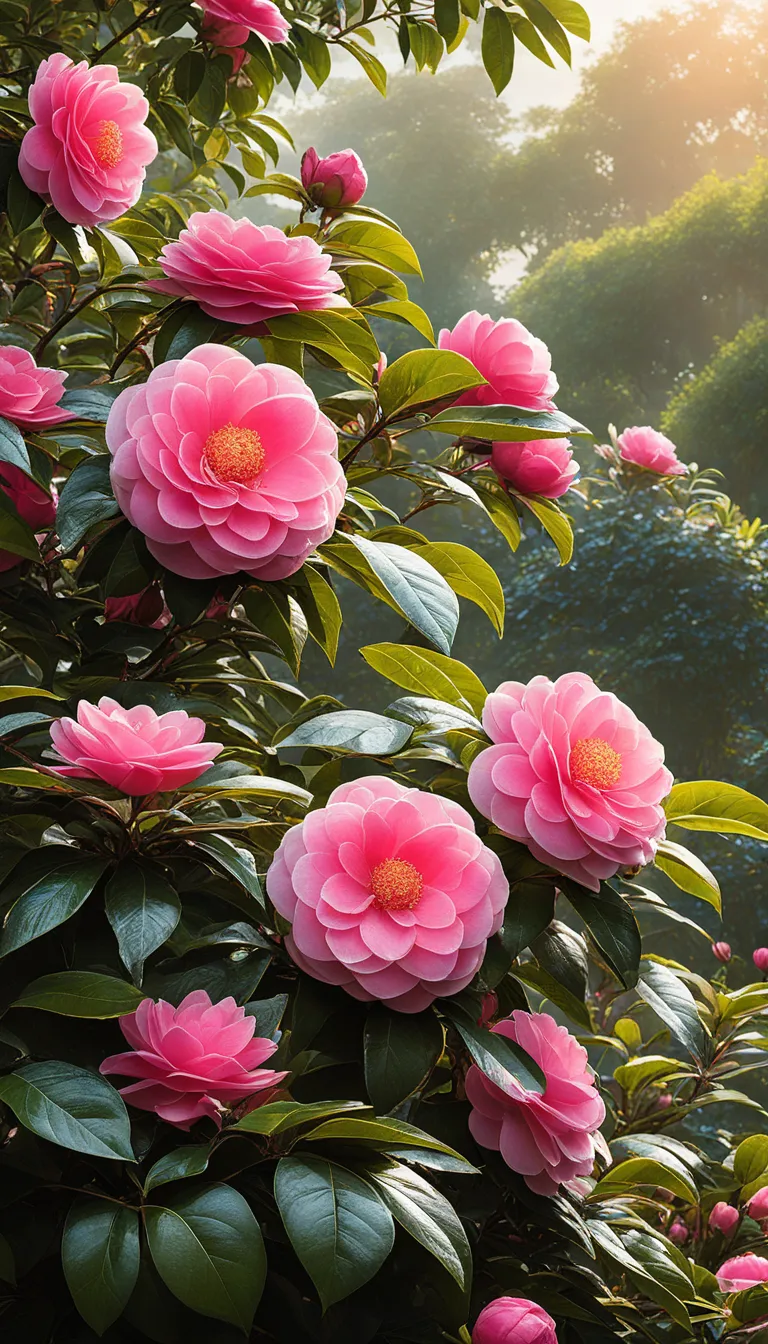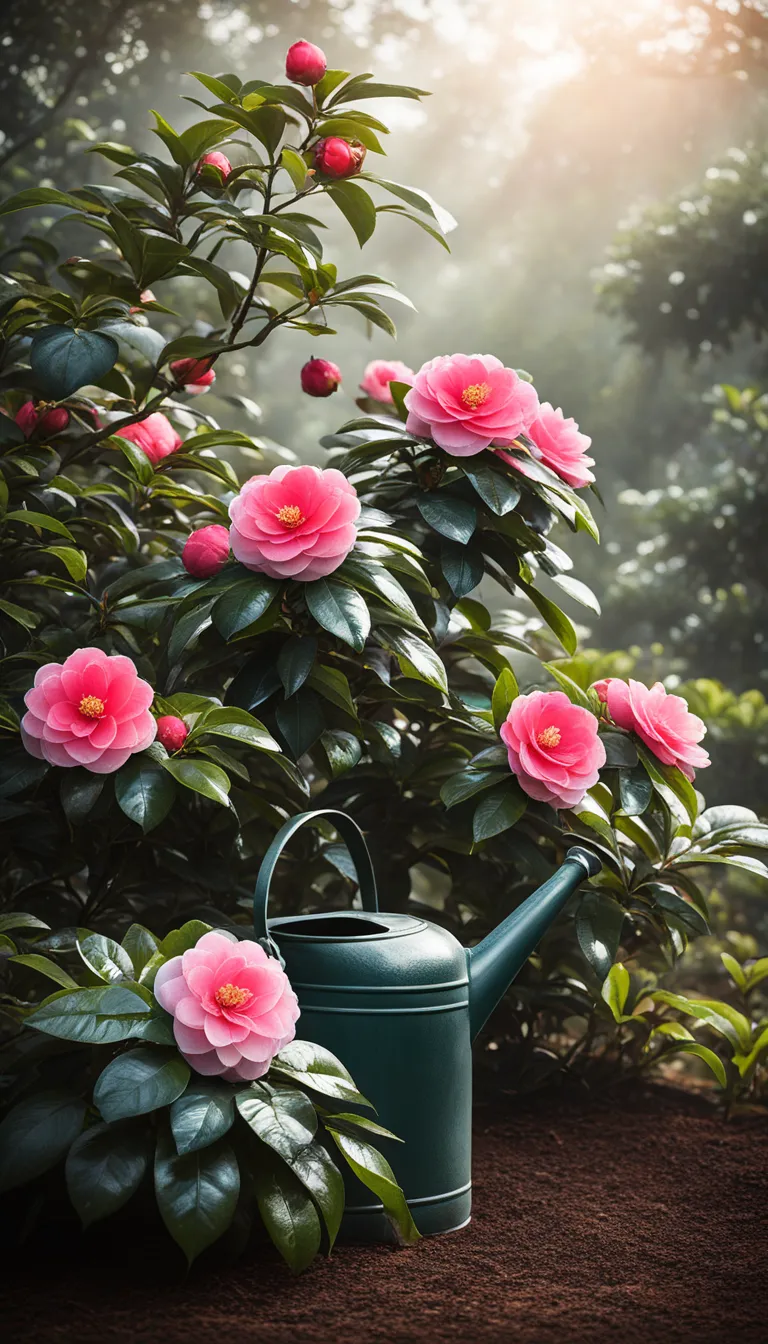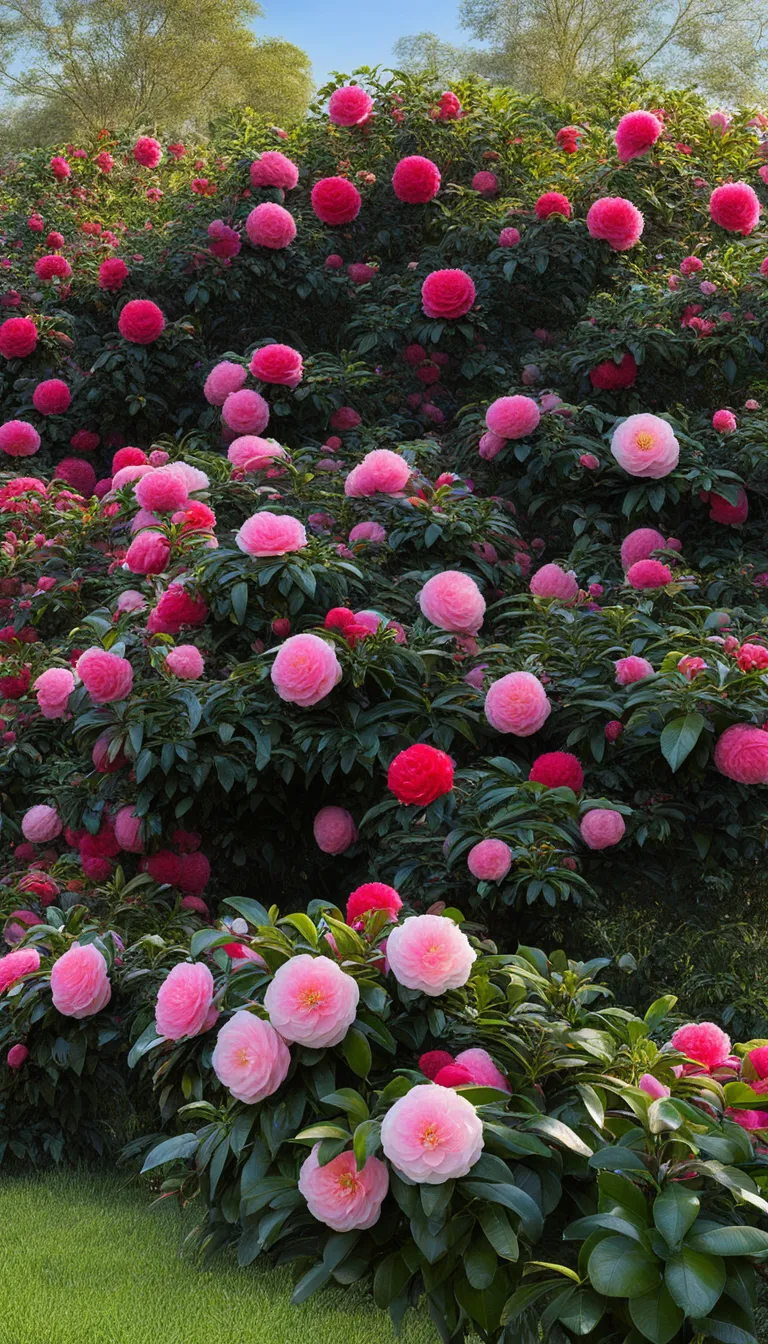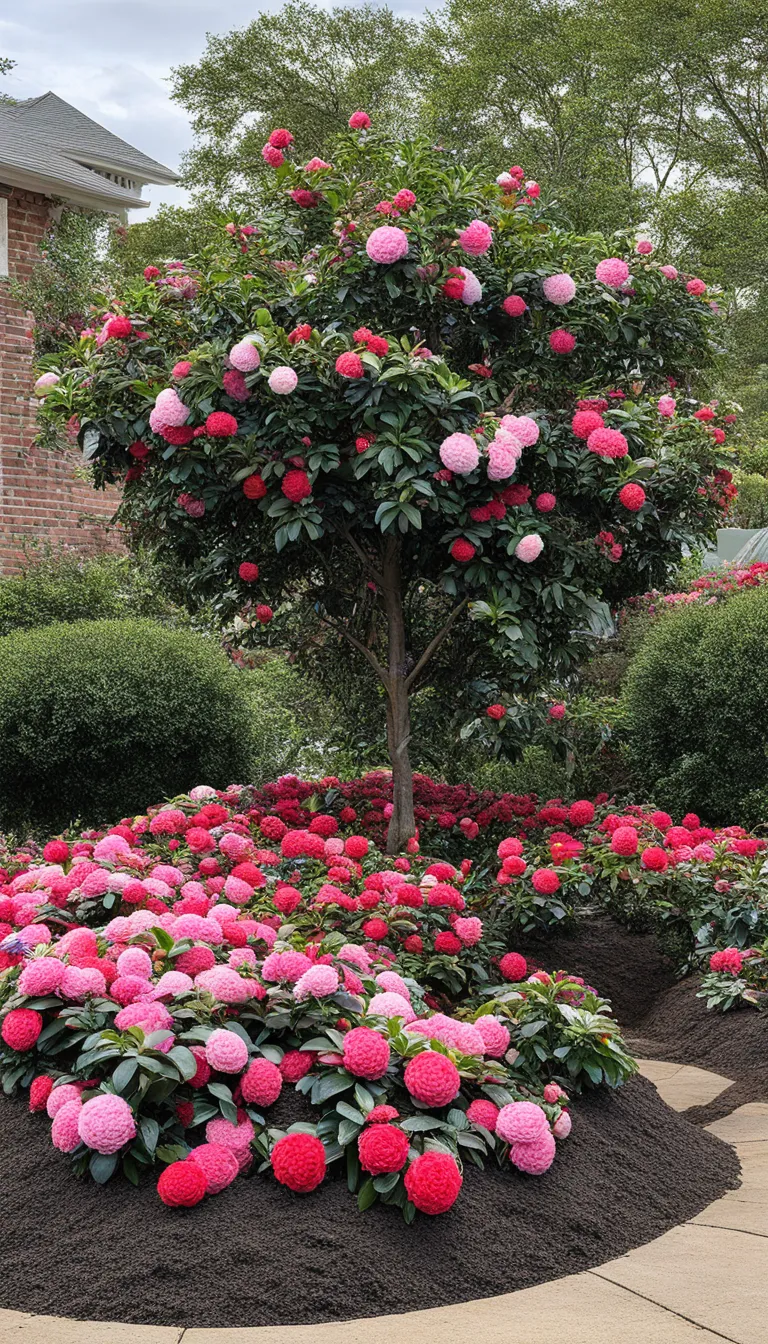Discover the beauty and intricacies of Camellias, a beloved genus of flowering plants cherished by gardeners for their vibrant blooms and glossy foliage. Have you ever wondered what makes these plants so captivating and irresistible to the eye? It’s not just the explosion of color they bring to a garden; it’s the surprise of their resilience and the elegance they exude throughout their blooming season.
As you stroll through a garden adorned with these floral jewels, you’re likely to be taken aback by the sheer variety of colors and forms. It’s a sensory overload, akin to witnessing a firework display in the midst of spring’s embrace. But what’s truly astonishing is the endurance of the Camellia, blooming from fall to spring, when most other flowers have long said goodbye.
In this guide, we’ll embark on a journey to explore the world of Camellias. From their rich history to the secrets behind their care, we’ll dive into every aspect that makes these plants a treasured addition to any garden. So, are you ready to be part of the Camellia’s charm and learn how to make these beauties thrive under your care? Let’s get started and unveil the mysteries of these enchanting blooms.

What is Camellia?
Camellia, a genus that has captivated hearts for centuries, stands as a symbol of both beauty and resilience. Originating from the eastern and southern regions of Asia, these evergreen shrubs have become a cornerstone in many gardens across the world. Their lustrous leaves and exquisite blooms have a way of bringing a touch of elegance to any landscape.
But what really sets Camellia apart? It’s their diversity and cultural significance. With over 300 species and thousands of hybrids, Camellias offer a palette of colors, forms, and sizes. They’ve been cultivated for thousands of years, with their use ranging from ornamental to practical, as in the case of Camellia sinensis, the tea plant. This particular species has shaped cultures around the globe, with its leaves being essential for creating various types of tea.
Let’s not forget the symbolism. In many cultures, Camellias represent love, affection, and admiration. They’ve been featured in art, literature, and even on the stage of politics – a true testament to their enduring legacy. So, when you plant a Camellia, you’re not just adding a plant to your garden; you’re embracing a piece of history that has been cherished for generations.
- Evergreen Shrubs: Lustrous, glossy leaves all year round.
- Stunning Flowers: A variety of colors from pure white to deep reds.
- Cultural Icon: Symbolizes love and is steeped in tradition.
- Tea Production: Camellia sinensis is used to produce tea.

How to Care for Camellia?
Have you ever wondered how to keep your Camellias flourishing, bursting with color and life? Well, caring for these botanical beauties is simpler than you might think! First things first, Camellias thrive in well-drained, acidic soil. So, make sure they’re planted in just the right spot to avoid standing water.
When it comes to sunlight, Camellias are a bit like Goldilocks—they prefer it just right. Too much direct sun can scorch their leaves, while too little can lead to lackluster blooms. Aim for a location that offers dappled sunlight or partial shade for the best results.
Now, let’s talk watering. These plants enjoy consistent moisture, but it’s crucial not to overdo it. How do you strike the balance? Check the soil with your finger—if it’s dry a couple of inches down, it’s time to water. During the growing season, keep a closer eye on their hydration needs, especially if the weather is particularly dry or hot.
Feeding your Camellias is like giving them a gourmet meal. They’ll reward you with explosive growth and an explosion of blooms. Use a fertilizer formulated for acid-loving plants, and follow the instructions carefully. Typically, feeding them in early spring and mid-summer will do the trick.
Pruning is another key aspect of Camellia care. Prune right after they bloom to shape the plant and encourage new growth. Remember, Camellias set their buds in the previous year, so late pruning could mean saying goodbye to next year’s flowers—and we wouldn’t want that, would we?
Lastly, keep an eye out for pests such as aphids and scale insects. A strong blast of water or the use of horticultural oil can often keep these critters at bay. With these tips, your Camellias will be the talk of the neighborhood—lush, vibrant, and absolutely stunning!

What are the Camellia Varieties?
Have you ever wondered about the sheer variety of Camellias that might grace your garden with their presence? Camellia varieties are as diverse as they are beautiful, each with its own unique charm. Whether you’re looking for a splash of color or a certain petal shape, there’s a Camellia out there for you. Let’s dive into the world of these flowering jewels!
First off, let’s talk about the Camellia japonica, often referred to as the ‘Japanese Camellia’. This species is renowned for its large, exquisite blooms which can come in shades of pink, red, and white. Then there’s the Camellia sasanqua, a variety known for its ability to thrive in slightly cooler climates and its elegant, smaller flowers that can brighten up any winter day.
But wait, there’s more! For those who appreciate the unusual, the Camellia reticulata offers larger leaves and uniquely patterned flowers. And let’s not forget about the Camellia sinensis – yes, the very plant that gives us tea leaves! It might not have the showiest flowers, but its cultural and economic significance is undeniable.
To give you a clearer picture, here’s a simple table outlining some popular Camellia varieties:
| Variety | Description | Flower Color |
|---|---|---|
| Camellia japonica | Large, showy blooms | Pink, Red, White |
| Camellia sasanqua | Smaller flowers, winter bloomer | Various |
| Camellia reticulata | Large leaves, patterned flowers | Bright, Varied |
| Camellia sinensis | Tea plant, smaller flowers | White, Yellow |
And the list goes on! With hundreds of hybrids and cultivars, the possibilities are nearly endless. From the ruffled petals of the ‘Peony’ forms to the formal, symmetrical beauty of ‘Rose-form Double’ camellias, the variety is truly astounding. So, why not add a Camellia or two to your garden and enjoy the splendor they bring?





